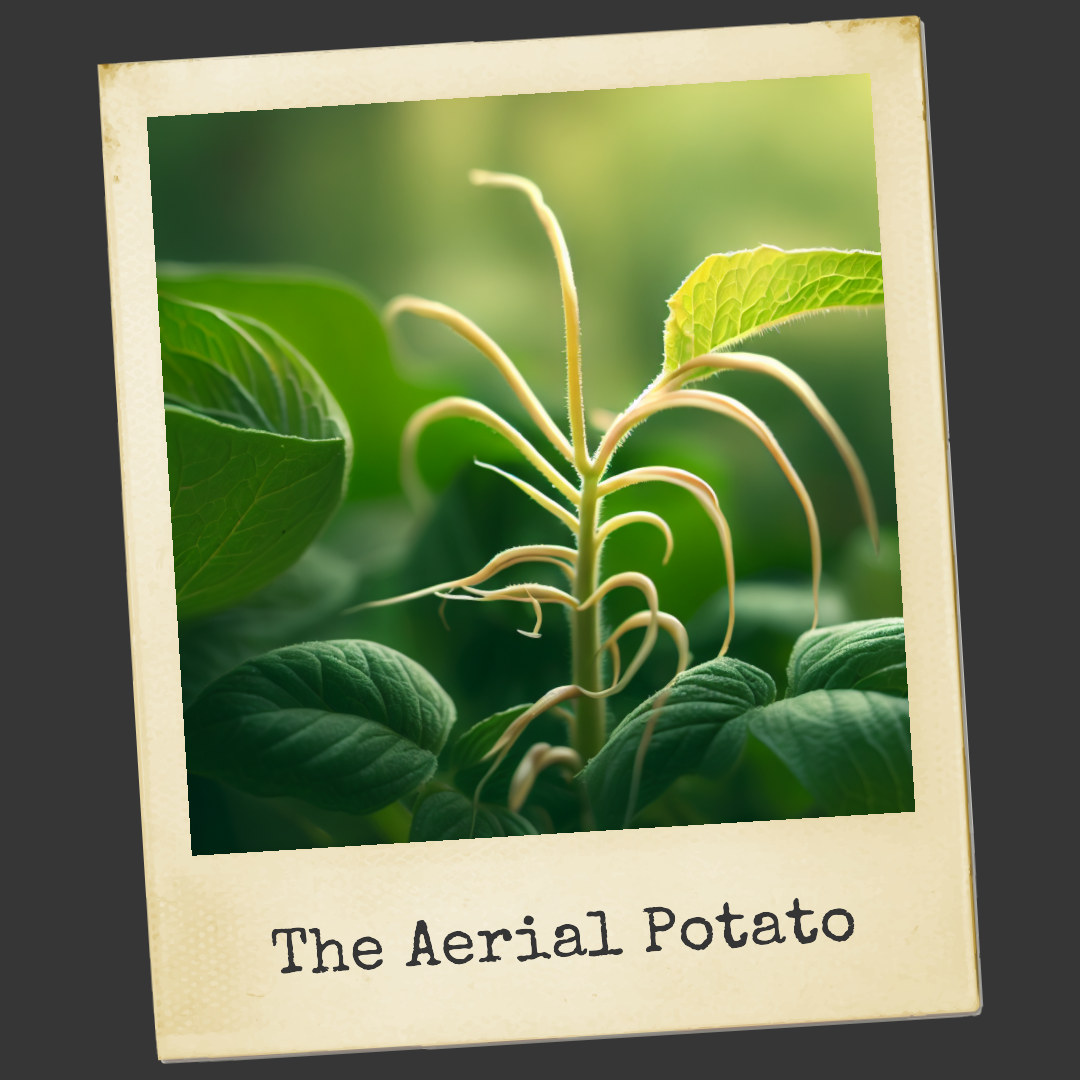Imagine cultivating a unique vine that not only offers a living, edible fence but also provides nutritious tubers and versatile materials for your garden. The aerial potato, also known as Air Potato or Bitter Yam (Dioscorea bulbifera), is a remarkable plant with a rich history and diverse uses. In this OrganicMotion article, we’ll delve into the intriguing world of aerial potato, from its description and cultivation to its culinary potential and environmental considerations.
Unveiling the Aerial Potato
The aerial potato is a long-lived vine that originates from Africa, Asia, and Australia. This climbing plant features heart-shaped leaves with prominent veins and produces rounded to egg-shaped edible tubers along its stems. The vine can reach heights of up to 10 meters, making it an eye-catching addition to your landscape. Its fragrant, cream-colored flowers add an extra touch of charm.
Functional Beauty in Your Garden
The aerial potato is not only aesthetically pleasing but also highly functional in various aspects of gardening:
- Living Fence: Use the aerial potato as a living fence or screen to enhance privacy and create an organic boundary between your space and the surroundings.
- Edible Tubers: Harvest the tubers for a unique culinary experience. These tubers have a taste reminiscent of potatoes, yams, and sweet potatoes combined, offering a delightful fusion of flavors.
- Versatile Materials: The dried vines of the aerial potato are excellent for making ropes, adding a touch of natural charm to your garden and permaculture projects.
Cultivation and Growth
Before embracing the beauty of aerial potatoes, consider the following cultivation tips:
- Invasive Potential: The aerial potato has the potential to become invasive. Choose planting locations carefully or opt for container gardening to prevent uncontrolled spreading.
- Propagation: Reproduce the plant using stem tubers or bulbils. Sprout these in a dark, moist environment and plant them out when shoots emerge.
- Training and Harvesting: Keep the vine tamed and controlled by growing it on a vertical trellis. This helps avoid its spread and facilitates easy maintenance and harvesting.
Nutritional and Culinary Delights
The aerial potato isn’t just about aesthetics and versatility; it also offers nutritional and culinary benefits:
- Folk Remedies: Various cultures have used aerial potatoes as folk remedies for ailments such as conjunctivitis, diarrhea, and dysentery.
- Edible Tubers: Harvest the tubers and prepare them by peeling, slicing, and cooking them like regular root vegetables. Boiling can help remove any bitterness, and they can be used in a variety of recipes.
- Culinary Possibilities: Whether mashed, fried, baked, or grilled, aerial potatoes offer a unique taste that blends the flavors of different root vegetables.
Captivating Appearance and Diverse Uses
The aerial potato, with its captivating appearance and diverse uses, is an ideal addition to your suburban backyard. From its role as a living fence to its nutritional value and culinary potential, this vine offers an array of benefits. However, it’s important to manage its growth carefully to prevent invasiveness. As you embrace the aerial potato, you’ll be embracing an eco-friendly and organic lifestyle that encompasses beauty, functionality, and deliciousness in one unique package.
